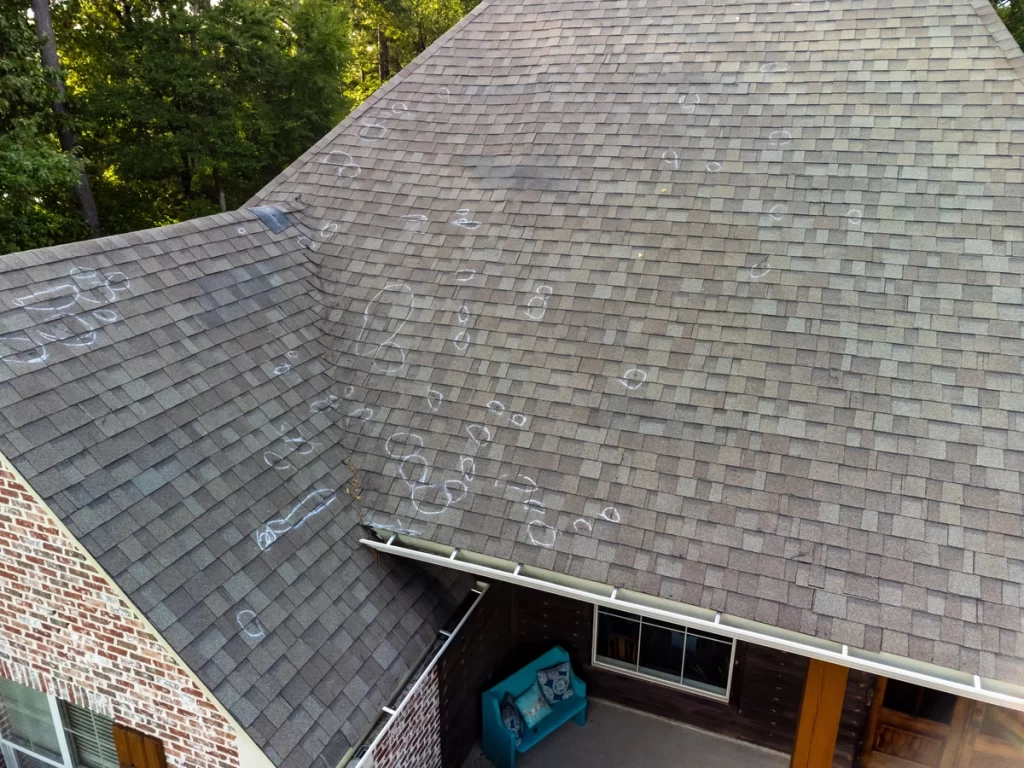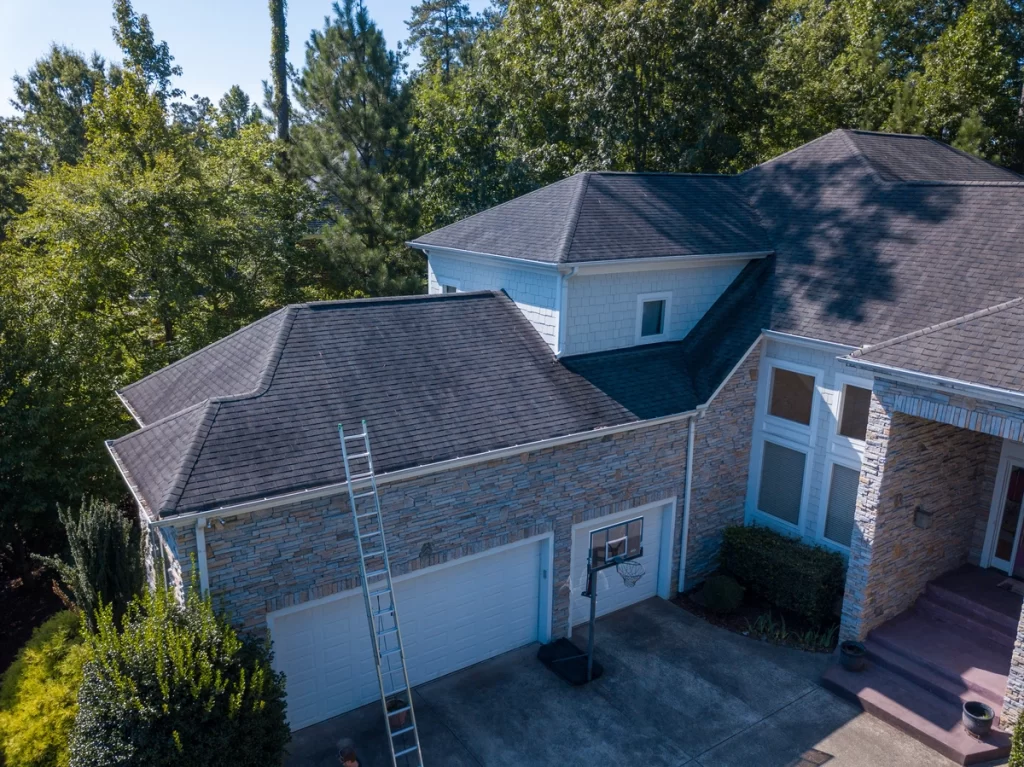Question: Would you consider yourself a roofing expert?
If the answer is no, we get it. And while you don’t have to have the same knowledge as a professional roofer, a lack of understanding can lead to roof issues forming without you knowing it!
Like any other part of your house, your roof requires regular maintenance to ensure it’s in good condition. One essential aspect of roof maintenance is a roof inspection, but many homeowners wonder how long it takes and why it’s necessary.
In this detailed guide, we will help explain:
- The reasons for getting a roof inspection,
- The steps involved,
- The duration of the process
- How often you should schedule one
Why You May Need a Roof Inspection

A roof inspection is not just an optional task; it’s a crucial part of homeownership. Here are some reasons why you may need a roof inspection:
- Preventive Maintenance: Regular inspections can help identify potential issues early, allowing you to address them before they become costly problems. This can extend the lifespan of your roof and save you money in the long run.
- Storm Damage: Severe weather, such as heavy rain, hail, or strong winds, can damage your roof. Even if you don’t notice any visible damage, it’s essential to have your roof inspected after a significant storm to ensure it’s still in good shape.
- Roof Aging: As your roof ages, it becomes more susceptible to wear and tear. Routine inspections can help you assess the condition of an aging roof and plan for necessary repairs or replacements.
- Selling or Buying a Home: If you’re selling your home, a roof inspection can provide potential buyers with peace of mind, and it can also help you determine if any repairs are needed before putting your property on the market. Conversely, if you’re buying a home, a thorough roof inspection can uncover any hidden issues that may affect your decision.
- Insurance Requirements: Some insurance companies may require a roof inspection to assess the condition of your roof before providing coverage or renewing your policy. Ensuring your roof is in good condition can help you maintain your insurance coverage.
The 4 Steps in a Roof Inspection
A roof inspection involves a series of systematic steps that a qualified professional will follow to assess the condition of your roof. Here’s an overview of the typical steps involved:
1) Exterior Inspection:
- Visual Inspection: The inspector will start by visually examining the exterior of your roof from the ground. They will look for signs of damage, such as missing or damaged shingles, cracks, or any obvious issues with the roof’s structure.
- Gutter and Downspout Inspection: Gutters and downspouts are closely connected to the roof’s drainage system. The inspector will check for blockages or damage that could affect water flow off the roof.
2) Interior Inspection:
- Attic Examination: The inspector will enter your attic space to assess the condition of the roof from the inside. They will look for signs of leaks, moisture, and structural issues. Proper ventilation and insulation will also be evaluated.
- Roof Deck Inspection: If necessary, the inspector may access the roof deck to check for any issues beneath the roofing materials, such as rot or water damage.
3) Material Assessment:
- Shingle Inspection: If your roof has shingles, the inspector will closely examine them for signs of wear, damage, or granule loss. They will also check for proper sealing and secure attachment.
- Flashing Evaluation: Roof flashings, which are used to seal joints and transitions, will be inspected for signs of deterioration or damage.
- Chimney and Skylight Inspection: If applicable, any chimneys, skylights, or other roof penetrations will be inspected for flashing integrity and proper sealing.
3) Assessment of Roof Ventilation:
Proper roof ventilation is essential to prevent moisture buildup and maintain the overall health of your roof. The inspector will check for adequate ventilation to ensure it’s functioning correctly.
How Long Does a Roof Inspection Take?
The duration of a roof inspection can vary depending on several factors, including the size and complexity of your roof, its accessibility, and the thoroughness of the inspection. On average, a standard residential roof inspection can take anywhere from 30 minutes to a few hours. Here are some factors that may influence the duration:
- Roof Size: Larger roofs will naturally require more time to inspect thoroughly. A small, straightforward roof will take less time than a sprawling, multi-story one.
- Roof Complexity: Roofs with multiple angles, valleys, and complex architectural features may require more time to assess, as the inspector needs to carefully examine each area.
- Accessibility: If your roof is easy to access and doesn’t require special equipment, the inspection may be quicker. In contrast, roofs with limited access or steep slopes may take longer to inspect.
- Inspector Experience: Experienced roof inspectors are often more efficient at identifying issues and may complete the inspection more quickly.
It’s essential to understand that the time spent on a roof inspection is an investment in the longevity and safety of your home. A thorough inspection ensures that potential problems are not overlooked.
How Often Should You Schedule a Roof Inspection?

The frequency of roof inspections depends on various factors, including your location, the type of roofing material used, and the age of your roof. Here are some general guidelines:
- Annual Inspections: In most cases, it’s a good practice to schedule a roof inspection at least once a year. Annual inspections can help catch minor issues before they escalate.
- After Severe Weather: If your area experiences severe weather, such as a hailstorm or hurricane, it’s essential to have your roof inspected immediately afterward. Even if there are no visible signs of damage, hidden issues may exist.
- After Roofing Work: If you’ve had any roofing repairs or replacements, it’s advisable to have an inspection to ensure the work was done correctly and that no issues were overlooked.
- Before Selling or Buying a Home: If you’re planning to sell your home or are in the process of buying one, a roof inspection should be part of the transaction process to assess the roof’s condition.
- Based on Roof Material: Different roofing materials have varying lifespans. Asphalt shingle roofs typically last 20-30 years, while metal or tile roofs can last much longer. Consider the age of your roof and schedule inspections accordingly.
Roofing Contractors You Can Trust
A roof inspection is a critical part of homeownership that helps maintain the integrity of your home and protect your investment. And a quality roofing company can make or break your experience!
If you’re looking for a roofing contractor who can spot all the small signs of roof damage, Monarch Roofing is the one to call on! Contact us today and receive a quote for your roof repairs and replacement project.





